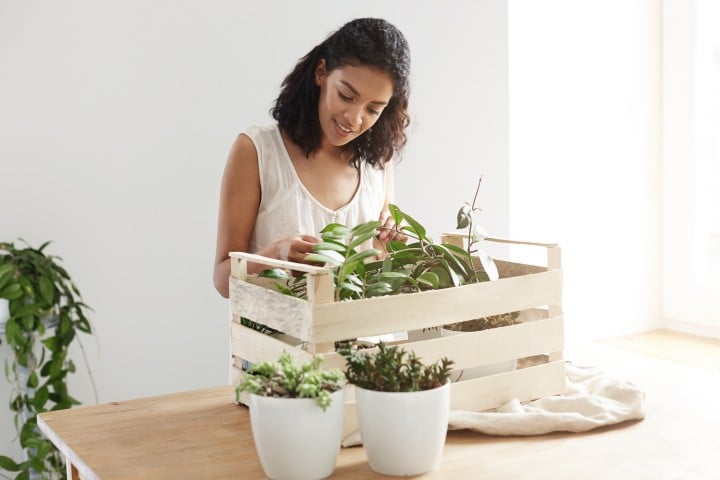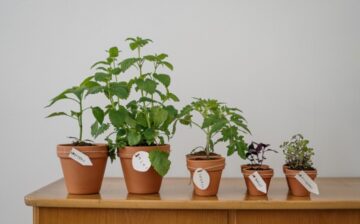Moving plants to a new location presents unique challenges. Whether relocating across town or venturing into a new climate, ensuring your plants arrive unharmed requires careful planning. In this guide, we’ll provide actionable strategies and practical tips to keep your greenery thriving during the move.

Why Moving Plants Safely Matters
Plants aren’t just décor—they’re living organisms that thrive in stable environments. Sudden changes in light, temperature, and humidity during a move can lead to transplant shock or plant loss. Following these steps, you can minimize stress on your plants and ensure they settle seamlessly into your new space.
Pre-Move Preparation
Evaluate Which Plants to Move
Not every plant is worth relocating. Large plants, fragile species, or those nearing the end of their life cycle may not survive the journey. Evaluate the health, size, and sentimental value of each plant. If transporting them isn’t feasible, consider giving some away or donating them.
If you’re crossing state or international borders, research plant transport regulations. Some areas enforce strict quarantine rules to prevent pests and diseases from spreading.
Gather Essential Supplies
Ensure you have the right tools and materials to protect your plants during transit. You’ll need:
- Lightweight, shatterproof plastic pots
- Packing materials like bubble wrap, newspaper, or foam peanuts
- Plant labels to identify species
- Stakes for tall or delicate plants
- A climate-controlled vehicle if temperatures are extreme
Prune and Maintain Before Moving
Trim your plants a week before the move. Prune dead or damaged foliage and remove excess growth to reduce water demand during transit. Avoid heavy watering immediately before moving, as soggy soil can lead to root rot or make pots unnecessarily heavy.
Check the Variety of your plant
Not all varieties of the same plant species have identical care needs, especially during a move. For example, some hoya varieties, like Hoya carnosa, can handle reduced light and dry conditions for a short period, while others, such as Hoya obovata, may require more consistent moisture and airflow to prevent stress. Research each variety’s specific requirements to tailor your moving strategy, ensuring all plants receive the appropriate level of care for a smooth transition.
Acclimate to New Conditions
If relocating to a different climate or environment, start acclimating your plants beforehand. Gradually reduce water and light exposure to mimic their conditions in the new location. This preconditioning can reduce transplant shock and help them adapt more quickly.
Packing Plants Safely
Re-pot into Durable Containers
Heavy ceramic pots or fragile planters are risky for transport. A week before moving, transfer plants into lightweight plastic pots. This prevents breakage and reduces overall weight.
Secure Plants and Soil
Wrap the base of each plant with plastic or cloth to keep the soil contained. Use twine or soft ties to support taller plants and prevent them from tipping during transit.
Box Your Plants Carefully
Place more miniature plants in sturdy boxes, ensuring they’re snug but not crushed. Fill gaps with crumpled newspaper or packing peanuts for added cushioning. Avoid sealing the tops of the boxes entirely—plants need airflow to survive the trip. Clearly label each box as “Fragile: Live Plants” for extra care during handling.
Transportation Tips
Use a Climate-Controlled Vehicle
Temperature fluctuations are one of the most significant risks to plants during a move. Transport them in a personal vehicle where you can control the temperature. Avoid placing plants in the moving truck’s cargo area, as these spaces are often too hot or cold.
Position Plants Correctly
Keep plants upright and away from the vehicle’s direct sunlight, vents, or cold drafts. Secure boxes to prevent sliding, and don’t stack heavy items on top.
Limit Transit Time
The shorter the trip, the better for your plants. Plan your route to minimize delays and have an explicit schedule for unpacking upon arrival.
Post-Move Care
Unpack and Inspect Immediately
As soon as you arrive, unbox your plants and check for signs of damage. Inspect leaves, stems, and roots for any breaks or wilting. If the soil has shifted, gently repack it around the roots.
Reintroduce Gradually
For the first few days, place plants in a shaded, low-stress area of your new home. This will give them time to acclimate before moving them to their final spots. Avoid immediate exposure to direct sunlight or harsh conditions.
Monitor for Stress
Watch for symptoms of transplant shock, such as yellowing leaves, wilting, or slowed growth. Provide extra care with consistent watering and avoid fertilizing until the plants show signs of recovery.
Special Considerations for Long-Distance Moves
Shipping Plants
If self-transport isn’t feasible, consider shipping your plants through specialized services. Companies that handle live plant shipping often provide climate-controlled packaging and guarantee delivery times.
Adjust for Climate Changes
Relocating to a drastically different climate? Research the environmental needs of your plants and adjust care routines accordingly. Some plants may require additional humidity, shade, or watering to thrive in their new environment.
Comply With Legal Requirements
Confirm any necessary permits or quarantine requirements before moving plants across state or international borders. Failure to comply could result in hefty fines or plant confiscation.
To conclude
Relocating plants requires more effort than moving furniture, but the reward of preserving your greenery is well worth it. Following these steps ensures your plants arrive in top condition and thrive in their new home.
Have questions or tips for moving plants? Share them in the comments below!
We hope you found this blog post on How to Move Plants Without Damaging Them: A Step-by-Step Guide, useful. Be sure to check out our post on How to Successfully Move Houseplants to a New Home for more great tips!
Have Experience in the Moving Industry? Want an Additional Income Stream? Work With All Around Moving!
The Work With Us program All Around Moving Services Company offers, provides experienced moving consultants with the opportunity to run their own Relocation Consultant business. Partner with us and profit. Click here to learn more.





